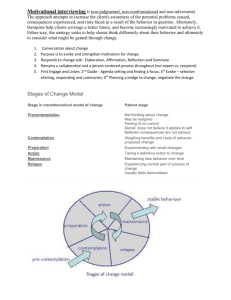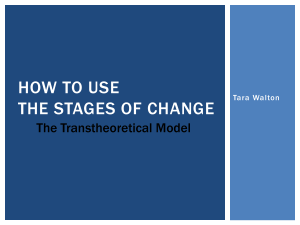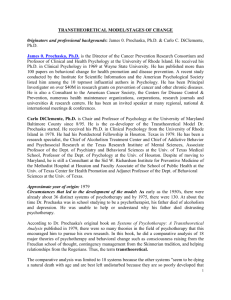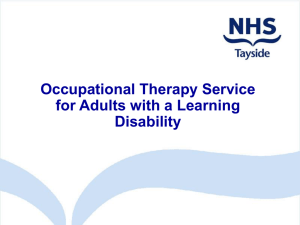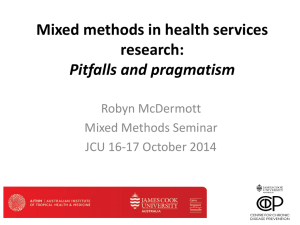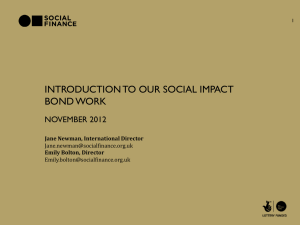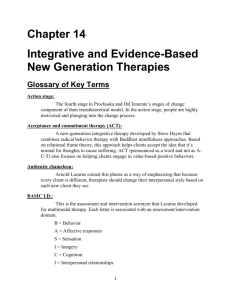Stages of Change
advertisement
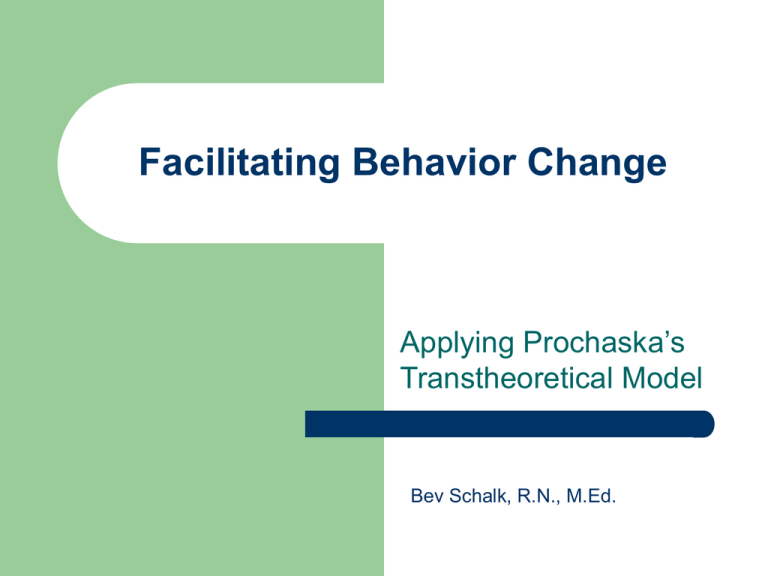
Facilitating Behavior Change Applying Prochaska’s Transtheoretical Model Bev Schalk, R.N., M.Ed. Objectives Discuss Prochaska’s Transtheoretical model. Describe the stages of change. Match typical statements with the stage of change they represent. Give examples of interventions tailored for each stage of change. Transtheoretical Model of Change People move through distinct stages on the road to successful change. Actions or interventions are most successful when tailored to the individual’s particular stage of change. At each stage, an appropriate approach can produce progress towards the next stage. A health coach can use the model to assess readiness to change, plan and deliver targeted interventions and help patients move along the continuum towards successful, sustained behavior change. Sources: Prochaska, James O. and Wayne F. Velicera, “Behavior Change: The Transtheoretical Model of Health Behavior Change” American Journal of Health Promotion: Vol. 12, No. 1, pp. 38–48. Prochaska, James O. and John C. Norcross, “Stages of Change” Psychotherapy: Vol. 38, No. 4, pp. 443-448. Stages of Change 1. 2. 3. 4. 5. 6. Precontemplation Contemplation Preparation Action Maintenance Termination Stages of Change 1. Precontemplation Not intending to take action in the next six months I Won’t Stages of Change 2. Contemplation Intending to take action in the next six months I Might Stages of Change 3. Preparation Intending to act in the next 30 days I Will Stages of Change 4. Action Made changes for less than six months I Am! Stages of Change 5. Maintenance Made and sustained changes for more than six months I Have Stages of Change Section Review: Group Activity Precontemplation Contemplation Preparation Action Maintenance “I’ve signed up for an exercise class. I start next week.” “I’ve started walking for 30 minutes each evening with my neighbor.” “I haven’t smoked for a year! I feel so much better.” “My grandpa smoked his whole life and lived to be 94 years old. I’m not going to quit, either.” “I’ve been thinking about losing weight but I don’t know where to begin. I’ve tried so many diets before but I always gain the weight back.” Interventions Interventions are most successful when they are tailored to the individual’s readiness to change. Interventions 1. Precontemplation Not intending to take action in the next six months •Provide information •Communicate willingness to assist and support •Help identify discrepancies “My grandpa smoked his whole life and lived to be 94 years old. I’m not going to quit, either.” Interventions 2. Contemplation Intending to take action in the next six months •Review benefits of lifestyle change •Provide information and referrals •Support and encourage “I’ve been thinking about losing weight but I don’t know where to begin. I’ve tried so many diets before but I always gain the weight back.” Interventions 3. Preparation Intending to act in the next 30 days •Identify and address barriers •Encourage support systems •Set achievable goals •Develop action plan •Help anticipate challenges “I’ve signed up for an exercise class. I start next week.” Interventions 4. Action Made changes for less than six months •Review benefits of lifestyle change •Discuss setbacks or barriers •Encourage incremental steps •Reinforce and track progress •Celebrate accomplishments •Prepare for challenges “I’ve started walking for 30 minutes each evening with my neighbor.” Interventions 5. Maintenance Made and sustained changes for more than six months •Provide ongoing monitoring and reinforcement •Address challenges and relapses •Review and revise goals •Identify helpful circumstances or conditions “I haven’t smoked for a year! I feel so much better.” Summary James Prochaska’s Transtheoretical Model of Change states that people go through distinct stages on the road to successful change. The stages that health coaches typically work with include: 1. Precontemplation (“I won’t”) 2. Contemplation (“I might”) 3. Preparation (“I will”) 4. Action (“I am”) 5. Maintenance (“I have”) Interventions are most successful when tailored to the individual’s readiness to change. A health coach can help facilitate a person’s progress through this continuum by recognizing the stage of change and providing targeted information, assistance and support. Questions? Bev Schalk, R.N., M.Ed.
